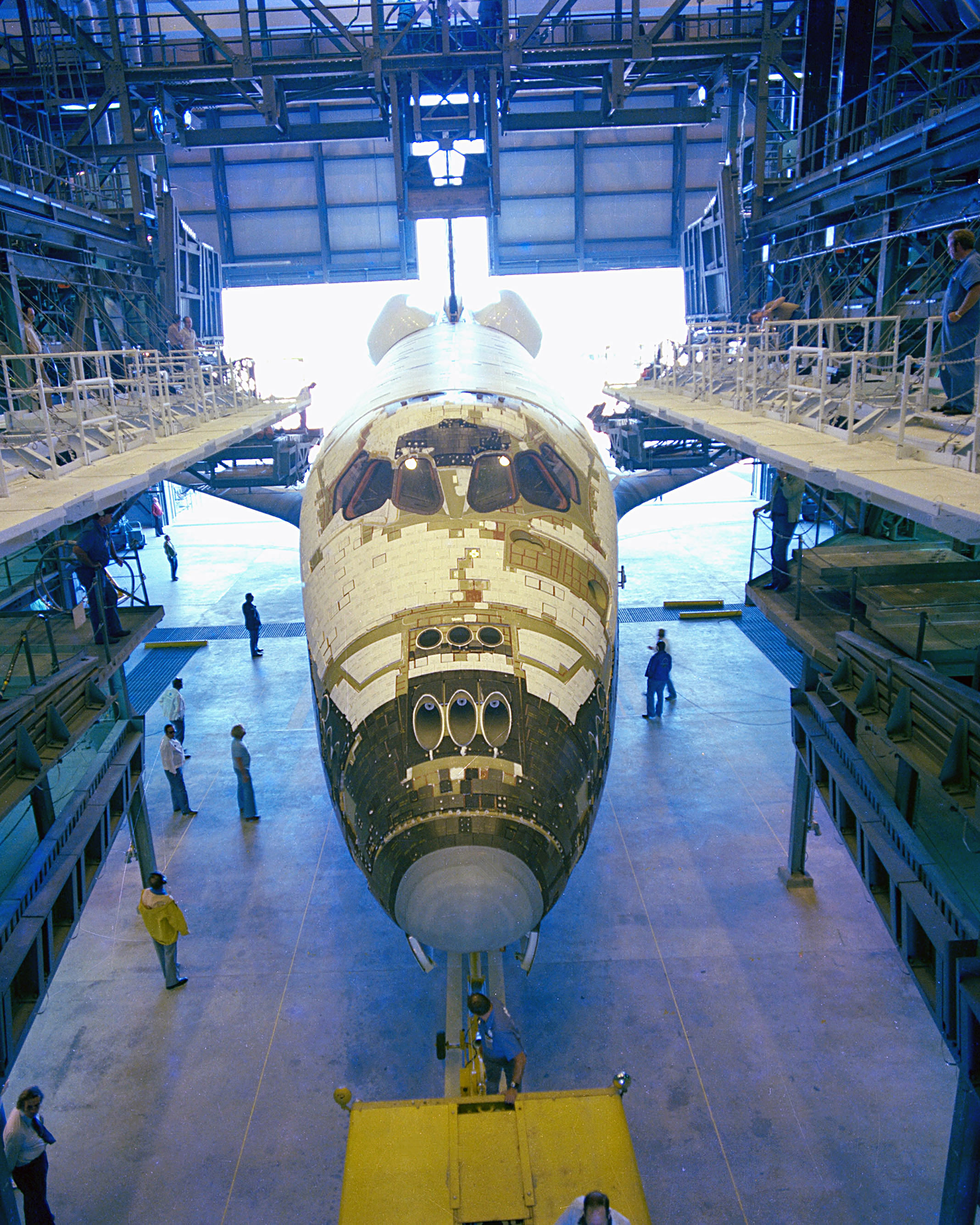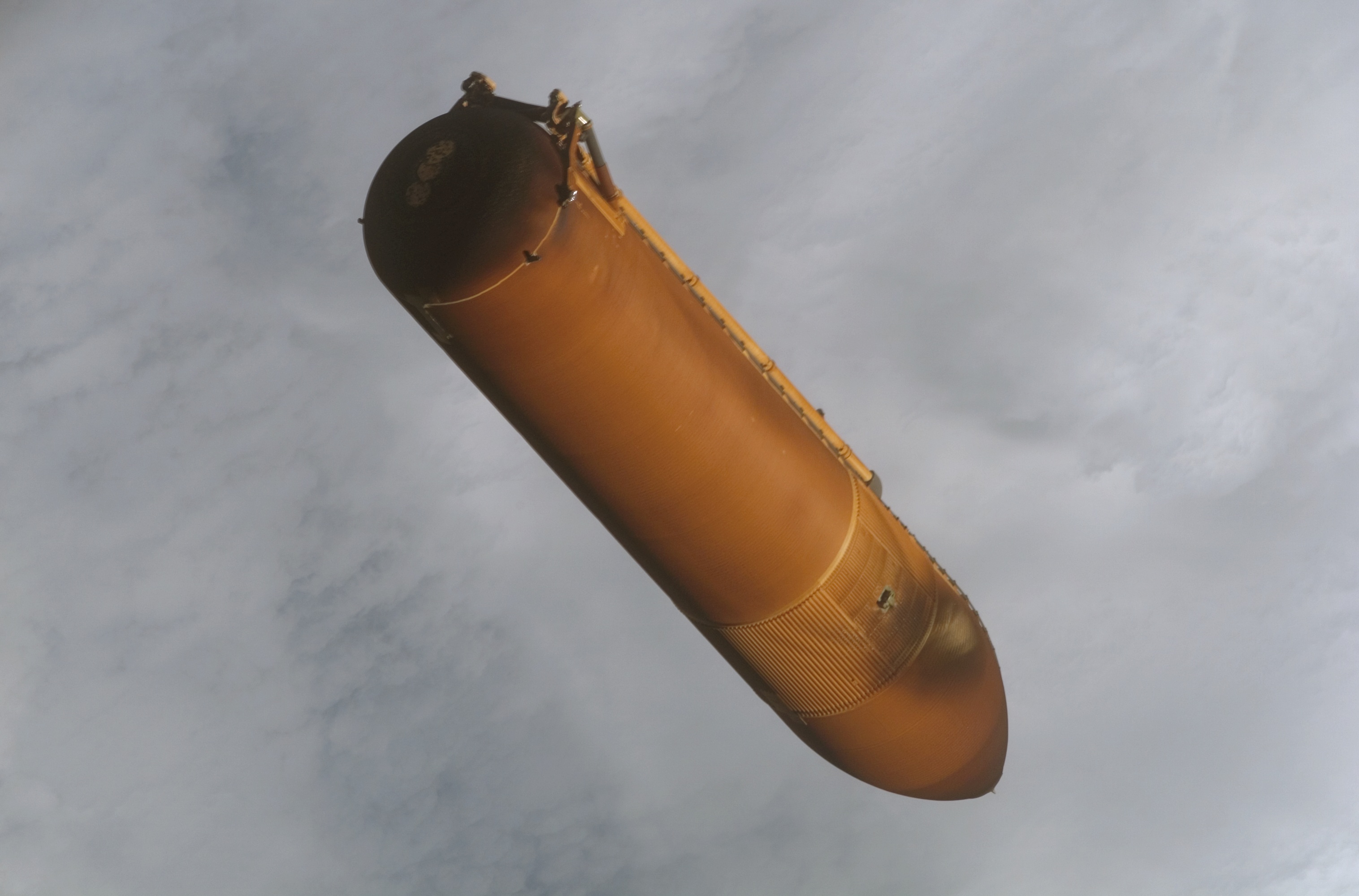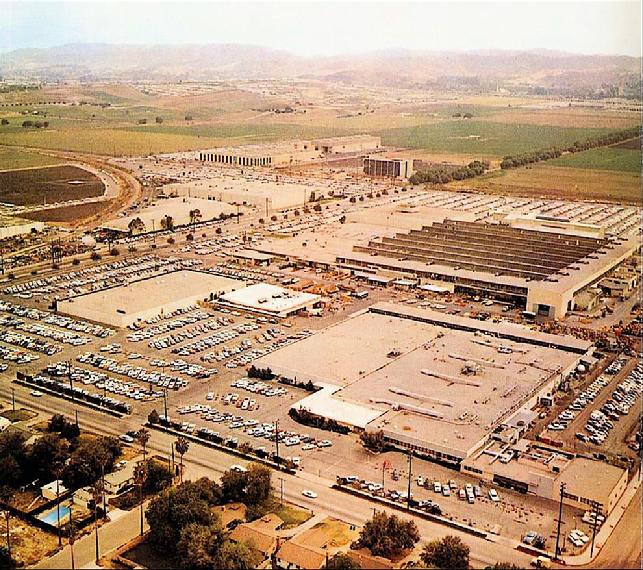|
RS-25
The RS-25, also known as the Space Shuttle Main Engine (SSME), is a liquid-fuel cryogenic rocket engine that was used on NASA's Space Shuttle and is used on the Space Launch System. Designed and manufactured in the United States by Rocketdyne (later Pratt & Whitney Rocketdyne and Aerojet Rocketdyne), the RS-25 burns cryogenic (very low temperature) liquid hydrogen and liquid oxygen propellants, with each engine producing thrust at liftoff. Although RS-25 heritage traces back to the 1960s, its concerted development began in the 1970s with the first flight, STS-1, on April 12, 1981. The RS-25 has undergone upgrades over its operational history to improve the engine's thrust, reliability, safety, and maintenance load. The engine produces a specific impulse (''I''sp) of 452 seconds (4.43 kN-sec/kg) in vacuum, or 366 seconds (3.59 kN-sec/kg) at sea level, has a mass of approximately , and is capable of throttling between 67% and 109% of its rated power level in one- ... [...More Info...] [...Related Items...] OR: [Wikipedia] [Google] [Baidu] |
Space Launch System
The Space Launch System (SLS) is an American Super heavy-lift launch vehicle, super heavy-lift Expendable launch system, expendable launch vehicle used by NASA. As the primary launch vehicle of the Artemis program, Artemis Moon landing program, SLS is designed to launch the crewed Orion (spacecraft), Orion spacecraft on a trans-lunar trajectory. The first (and so far only) SLS launch was the uncrewed Artemis I, which took place on 16 November 2022. Development of SLS began in 2011 as a replacement for the retiring Space Shuttle as well as the canceled Ares I and Ares V launch vehicles. SLS was built using existing Shuttle technology, including Space Shuttle Solid Rocket Booster, solid rocket boosters and RS-25 engines. The rocket has been criticized for its political motivations, seen as a way to preserve jobs and contracts for aerospace companies involved in the Shuttle program at great expense to NASA. The project has faced significant challenges, including mismanagemen ... [...More Info...] [...Related Items...] OR: [Wikipedia] [Google] [Baidu] |
Space Shuttle
The Space Shuttle is a retired, partially reusable launch system, reusable low Earth orbital spacecraft system operated from 1981 to 2011 by the U.S. National Aeronautics and Space Administration (NASA) as part of the Space Shuttle program. Its official program name was the Space Transportation System (STS), taken from the 1969 plan led by U.S. vice president Spiro Agnew for a system of reusable spacecraft where it was the only item funded for development. The first (STS-1) of four orbital test flights occurred in 1981, leading to operational flights (STS-5) beginning in 1982. Five complete Space Shuttle orbiter vehicles were built and flown on a total of 135 missions from 1981 to 2011. They launched from the Kennedy Space Center (KSC) in Florida. Operational missions launched numerous satellites, interplanetary probes, and the Hubble Space Telescope (HST), conducted science experiments in orbit, participated in the Shuttle–Mir program, Shuttle-''Mir'' program with Russia, ... [...More Info...] [...Related Items...] OR: [Wikipedia] [Google] [Baidu] |
Space Shuttle External Tank
The Space Shuttle external tank (ET) was the component of the Space Shuttle launch vehicle that contained the liquid hydrogen fuel and liquid oxygen oxidizer. During lift-off and ascent it supplied the fuel and oxidizer under pressure to the three RS-25 main engines in the orbiter. The ET was jettisoned just over 10 seconds after main engine cut-off (MECO) and it re-entered the Earth's atmosphere. Unlike the Solid Rocket Boosters, external tanks were not re-used. They broke up before impact in the Indian Ocean (or Pacific Ocean in the case of direct-insertion launch trajectories), away from shipping lanes and were not recovered. Overview The ET was the largest element of the Space Shuttle, and when loaded, it was also the heaviest. It consisted of three major components: * the forward liquid oxygen (LOX) tank * an unpressurized intertank that contains most of the electrical components * the aft liquid hydrogen (LH2) tank; this was the largest part, but it was relatively l ... [...More Info...] [...Related Items...] OR: [Wikipedia] [Google] [Baidu] |
Aerojet Rocketdyne
Aerojet Rocketdyne is a subsidiary of American Arms industry, defense company L3Harris that manufactures rocket, Hypersonic flight, hypersonic, and electric propulsive systems for space, defense, civil and commercial applications. Aerojet traces its origins to the General Tire and Rubber Company (later renamed GenCorp, Inc. as it diversified) established in 1915, while Rocketdyne was created as a division of North American Aviation in 1955. Aerojet Rocketdyne was formed in 2013 when Aerojet and Pratt & Whitney Rocketdyne were merged, following the latter's acquisition by GenCorp, Inc. from Pratt & Whitney. Aerojet Rocketdyne was acquired by L3Harris in July 2023 for $4.7 billion. History Background: Aerojet Several decades after it began manufacturing rubber products, General Tire & Rubber diversified into broadcasting and aeronautics. In the 1940s, the Aerojet company began experimenting with various rocket designs. For a solid-fuel rocket, they needed binders, and tur ... [...More Info...] [...Related Items...] OR: [Wikipedia] [Google] [Baidu] |
Staged Combustion Cycle
The staged combustion cycle (sometimes known as topping cycle, preburner cycle, or closed cycle) is a power cycle of a bipropellant rocket engine. In the staged combustion cycle, propellant flows through multiple combustion chambers, and is thus combusted in stages. The main advantage relative to other rocket engine power cycles is high fuel efficiency, measured through specific impulse, while its main disadvantage is engineering complexity. Typically, propellant flows through two kinds of combustion chambers; the first called and the second called . In the preburner, a small portion of propellant, usually fuel-rich, is partly combusted under non- stoichiometric conditions, increasing the volume of flow driving the turbopumps that feed the engine with propellant. The gas is then injected into the main combustion chamber and combusted completely with the other propellant to produce thrust. Tradeoffs The main advantage is fuel efficiency due to all of the propellant flowin ... [...More Info...] [...Related Items...] OR: [Wikipedia] [Google] [Baidu] |
Liquid-fuel Rocket
A liquid-propellant rocket or liquid rocket uses a rocket engine burning liquid propellants. (Alternate approaches use gaseous or solid propellants.) Liquids are desirable propellants because they have reasonably high density and their combustion products have high specific impulse (''I''sp). This allows the volume of the propellant tanks to be relatively low. Types Liquid rockets can be monopropellant rockets using a single type of propellant, or bipropellant rockets using two types of propellant. Tripropellant rockets using three types of propellant are rare. Liquid oxidizer propellants are also used in hybrid rockets, with some of the advantages of a solid rocket. Bipropellant liquid rockets use a liquid fuel such as liquid hydrogen or RP-1, and a liquid oxidizer such as liquid oxygen. The engine may be a cryogenic rocket engine, where the fuel and oxidizer, such as hydrogen and oxygen, are gases which have been liquefied at very low temperatures. Most designs of liquid ... [...More Info...] [...Related Items...] OR: [Wikipedia] [Google] [Baidu] |
Rocketdyne
Rocketdyne is an American rocket engine design and production company headquartered in Canoga Park, California, Canoga Park, in the western San Fernando Valley of suburban Los Angeles, California, Los Angeles, in southern California. Rocketdyne was founded as a division of North American Aviation in 1955 and was later part of Rockwell International from 1967 until 1996 and Boeing from 1996 to 2005. In 2005, Boeing sold the Rocketdyne division to United Technologies Corporation, becoming Pratt & Whitney Rocketdyne as part of Pratt & Whitney. In 2013, Rocketdyne was sold to GenCorp, GenCorp, Inc., which merged it with Aerojet to form Aerojet Rocketdyne.Marjorie Censer(18 Dec 2022) L3Harris moves to acquire Aerojet Rocketdynefor $4.7 billion, after Lockheed Martin ended its attempt for Rocketdyne in Feb 2022 History After World War II, North American Aviation (NAA) was contracted by the Defense Department to study the German V-2, V-2 missile and adapt its engine to Society of Aut ... [...More Info...] [...Related Items...] OR: [Wikipedia] [Google] [Baidu] |
HG-3 (rocket Engine)
The HG-3 was a liquid-fuel cryogenic rocket engine which was designed for use on the upper stages of Saturn rockets in the post-Apollo era. Designed in the United States by Rocketdyne, the HG-3 was to have burned cryogenic liquid hydrogen and liquid oxygen propellants, with each engine producing of thrust during flight. The engine was designed to produce a specific impulse (''I''sp) of in a vacuum, or at sea level. Developed from Rocketdyne's J-2 engine used on the S-II and S-IVB stages, the engine was intended to replace the J-2 on the upgraded MS-II-2 and MS-IVB-2 stages intended for use on the Saturn MLV, Saturn IB-B and Saturn V/4-260 rockets, with a sea-level optimised version, the HG-3-SL, intended for use on the Saturn INT-17. The engine was cancelled, however, during the post-Apollo drawdown when development of the more advanced Saturn rockets ceased, and never flew, although the engine was later used as the basis for the design of the RS-25 The RS-25, ... [...More Info...] [...Related Items...] OR: [Wikipedia] [Google] [Baidu] |
Orbiter Main Propulsion System
A spacecraft is a vehicle that is designed to fly and operate in outer space. Spacecraft are used for a variety of purposes, including communications, Earth observation, meteorology, navigation, space colonization, planetary exploration, and transportation of humans and cargo. All spacecraft except single-stage-to-orbit vehicles cannot get into space on their own, and require a launch vehicle (carrier rocket). On a sub-orbital spaceflight, a space vehicle enters space and then returns to the surface without having gained sufficient energy or velocity to make a full Earth orbit. For orbital spaceflights, spacecraft enter closed orbits around the Earth or around other celestial bodies. Spacecraft used for human spaceflight carry people on board as crew or passengers from start or on orbit (space stations) only, whereas those used for robotic space missions operate either autonomously or telerobotically. Robotic spacecraft used to support scientific research are space prob ... [...More Info...] [...Related Items...] OR: [Wikipedia] [Google] [Baidu] |
NASA
The National Aeronautics and Space Administration (NASA ) is an independent agencies of the United States government, independent agency of the federal government of the United States, US federal government responsible for the United States's civil list of government space agencies, space program, aeronautics research and outer space, space research. National Aeronautics and Space Act, Established in 1958, it succeeded the National Advisory Committee for Aeronautics (NACA) to give the American space development effort a distinct civilian orientation, emphasizing peaceful applications in space science. It has since led most of America's space exploration programs, including Project Mercury, Project Gemini, the 1968–1972 Apollo program missions, the Skylab space station, and the Space Shuttle. Currently, NASA supports the International Space Station (ISS) along with the Commercial Crew Program and oversees the development of the Orion (spacecraft), Orion spacecraft and the Sp ... [...More Info...] [...Related Items...] OR: [Wikipedia] [Google] [Baidu] |
Pratt & Whitney Rocketdyne
Pratt & Whitney Rocketdyne (PWR) was an American company that designed and produced rocket engines that use liquid rocket propellants, liquid propellants. It was a division of Pratt & Whitney, a fully owned subsidiary of United Technologies Corporation. It was headquartered in Canoga Park, California, Canoga Park, Los Angeles, California. In 2013, the company was sold to GenCorp, GenCorp,Inc., becoming part of Aerojet Rocketdyne. History Pratt & Whitney Rocketdyne was formed in 2005 when Pratt & Whitney Space Propulsion and Boeing Rocketdyne, Rocketdyne Propulsion & Power were merged, following the latter's acquisition from Boeing by United Technologies Corporation. Boeing retained the 2,800 acre Rocketdyne Santa Susana Field Laboratory property above Canoga Park while a majority of the engineering and design continued to be carried out at the Pratt & Whitney Space Propulsion facility located on Beeline Highway outside West Palm Beach, Florida. In July 2012, United Technologies ... [...More Info...] [...Related Items...] OR: [Wikipedia] [Google] [Baidu] |





